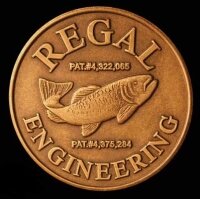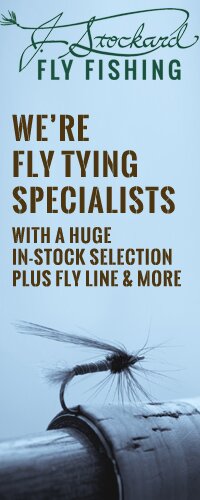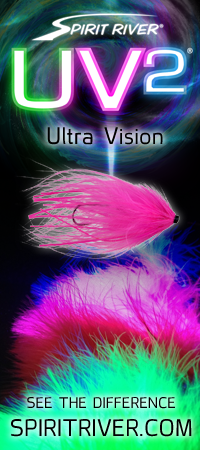There are literally thousands of mayflies, and for every mayfly, there are thousands of patterns to choose from. While there may be times when it is necessary to have a good imitation for a specific insect, there is no need to create new and different patterns for each mayfly you may encounter. All mayflies share similar body shapes and wing silhouettes. The elongated cylindrical body, and up right wing is common to all mayflies. It’s easy to just pick one of the common patterns, and vary the size, and color to match the natural.
Once you have picked out a suitable base style to use for your standard dun, emerger and cripple pattern, it’s a simple matter to alter these styles to match the hatch. Using hatch charts, and other information sources, it’s easy to narrow down the number of patterns you need to have, and tie them in advance.
I am going to propose a very simple mayfly dun pattern that has worked well over the years for me. This same pattern can be modified slightly to create not only the dun, but a cripple, an emerger, and a spinner pattern as well. This pattern is the Compara-dun. It uses very few materials, and is easy to tie. No new materials are necessary to create any of the four versions of the pattern. They all use the same
basic materials, namely fine deer hair, a fine textured synthetic dubbing, and a tailing material. The tailing can be moose body, deer hock, synthetic fibers (called micro fibbets,) or the very large hackle fibers from rooster neck hackle. These large hackles are usually too big for conventional hackle, but make great tailing material on most mayfly patterns. No regular hackle need be used for any of these patterns, but it can be added to some larger patterns to aid floatation in fast water.
 First the Compara-dun:
First the Compara-dun:
To tie the compara-dun, start the thread, and wrap back half the shank. Attach your tail material, and wrap to the bend just over the end of the barb. Take a turn or two of thread under the tails to flair them a little.
Now return the thread to ¼ of the way back from the eye, and attach the wing as follows.
Clean out a small bunch of fine deer hair, and stack it to even the tips. Remove from the stacker, and size the wing to be as long as the full shank. Hold with your left hand with the tips over the eye. Take two loose turns around the hair butts, and gently tighten up while holding the tips firmly on top of the hook. Take several more tight turns through the butts and trim butts as close to the hook as you can without cutting your thread. Return the thread to just behind the wing, and wind the thread through the wing, while you grasp and hold small sections of the tips back with each turn. Now make several turns tight in front to stand the hair vertical. Take the thread under the wing and back to the rear of the hook.
Now twist a little (a very tiny amount) of dubbing on the thread, and wrap a thin abdomen with a slight taper toward the wing. Wrap the abdomen right up to the rear of the wing, and then wind the dubbed thread under and to the front of the wing. Dub a slightly thicker thorax between the wing and the eye.
Finish off with a whip finish. The final step is to gently flair the hair out to the sides as shown. Just pull a few fibers down to each side (these represent the legs.) The wings should stand vertical, or be slanted slightly to the rear.
I have been trying an alternate method for constructing these duns. I tie the tail in and dub the abdomen first before tying in the wing. Then I tie the wing in with the butts toward the eye. After the wing is firmly wrapped, I trim the butts as close as I can, and then take a turn or two of thread to stand the wing more vertical. Dub the thorax one turn behind the wing then under and finish the thorax over the butts. This method creates a wing that slants back over the abdomen, which to me looks more like the naturals. Try both ways of tying the patterns and decide which works better for you.
Individual compara-dun pattern recipes for some common early mayflies:
Baetis species: Hook size 18 to 22. Tails gray hackle or fibbet fibers. Abdomen and thorax dark olive with some more gray-olive, and some a little brown olive. Wing darker shades of deer hair.
PMD : Hook size 16 to 20. Tails light gray or ginger hackle barbs. Body dubbing should match the local colors, but a selection of light olive, and light buff tan should work. Wing light shades of deer hair.
I usually do not find it necessary to match the wing colors too closely, dark and light shades of natural deer hair work fine. You can sometimes find died deer hair that is fine enough, if so died dun (gray,) and olive are nice.
The compara-emerger

Front View

The hook used is a curved light wire, scud or emerger hook. The tails are tied around the bend so that they point straight down or at 90 degrees to the hook point. The body is wrapped in a color to simulate the color of the nymph body, and stops just about at the half way point. Then the wing is tied in as on the compara-dun, and the thorax is added with a color that matches the emerging adult body. Peacock herl, pheasant tail fibers, or nymph dubbing can all be used for the abdomen of the emerger which will ride under the surface. The thorax and wings ONLY should be treated with floatant to keep it floating in the surface film.
Both the compara-dun, and the compara-emerger can be tied with a deer hair wing in sizes from 10 to 16 or 18. For smaller flies, it becomes necessary to use wound hackle (good dry fly quality,) for the wing. The tail abdomen would be done the same as for larger sizes, but then a hackle would be tied in, and a thorax dubbed. Then several turns of hackle wound over the thorax. Gray or dun hackle would be right for smaller flies like Baetis. Just a turn or two of dubbing in front of the hackle to finish off. The hackle should be over sized ( the barbs of the hackle should be as long as the hook shank.) Then the final step would be to trim the under side of the hackle off.
The only thing different would be the material used for the abdomen, which will be darker in most cases than the duns.
Baetis abdomen dark olive brown dubbing or pheasant tail fibers. I almost always use pheasant tail for the abdomens on the emergers and cripples. Then tie the thorax with superfine dubbing that will match the emerging insects adult color. Most newly hatched mayflies will show a more vivid coloration than the duns, the color of the dun fades quickly to a more subdued tone, so I use a brighter dubbing on the
thorax of the emergers and cripples than the body color for the duns of the same species.
Compara-cripple:


The Compara-cripple is tied on the same curved hook as the emerger pattern. The main difference is the wing orientation. Notice that the wing is tied in and pulled over the thorax and tied off with the tips extending over the eye . They are still flared like the compara-dun, and the compara-emerger. The tails on the cripple still point down, and the abdomen is still tied to color match the nymph body, and the thorax color matches the emerging dun coloration.
When tying a cripple, tie the tails and abdomen as before on the compara-emerger, and stop the body just slightly over two thirds of the way to the eye. Clean and stack a bunch of deer hair as before, and size the hair to be as long as the full shank. Tie in where the abdomen ends with the tips extending back over the abdomen (like a caddis) for now. Dub the thorax, and gather and pull the deer hair forward over the thorax, and tie down with a few wraps. Take a wrap or two through the tips, right to the eye, and finish off under the wing tips. Flair the wings as in the dun, and the emerger.
No other pattern changes need to be made between the cripple and the emerger, the recipes are the same.
With a selection of compara-duns, compara-emergers, and compara-cripples, in the various sizes, and colors necessary, almost any hatch and all the early stages of the hatch can be successfully matched. The compara-dun can be used to imitate the spinner of most mayflies, by changing the body color to match the spinners, and trimming the wing out of the top of the flare.
A note about the hair selected for these patterns. Use fine short deer hair for these wings. Coastal deer hair was used for years. Now there are some places where you can find early harvest deer hair. This hair will be shorter and finer than late winter harvested deer. Be sure and specify that you want hair for tying compara-duns when you order.
I can get away with yearling elk on some flies, in size 10, 12, and 14. A favorite “attractor” pattern I use is bleached elk hair with a peacock herl body. I tied it up to “imitate” the biting deer flies found on a lot of mountain streams out west, and it worked well enough that I always have a few in size 14, and 16.
I have been using this series of patterns for well over 15 years. They have worked so well for me, that I have stopped using any other mayfly patterns at all. All of these patterns use materials that are easy to find, and inexpensive. No pricey dry fly hackle is necessary. Try some, I think you will find them very effective.






































